Meta.Morf 2024 Conference Stream

Stream
Meta.Morf 2024 [up]Loaded Bodies Conference will be streamed on Vimeo April 19 and 20 from 10am to 3.30pm each day (CET).
https://vimeo.com/event/4223297

Stream
Meta.Morf 2024 [up]Loaded Bodies Conference will be streamed on Vimeo April 19 and 20 from 10am to 3.30pm each day (CET).
https://vimeo.com/event/4223297
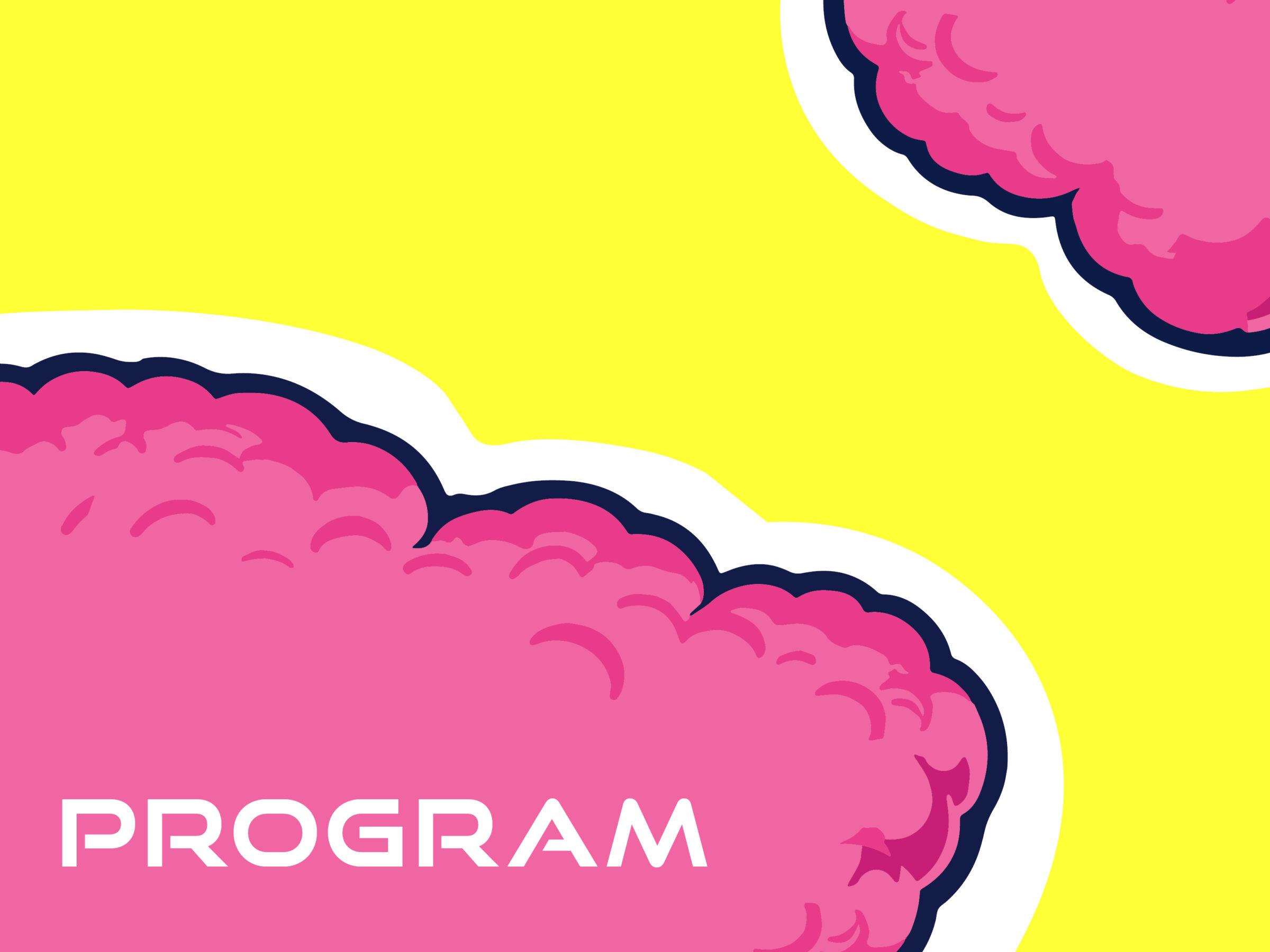
The Meta.Morf 2024 – [up]Loaded Bodies Conference explores the physical and technological body caught between virtual ecstasy and digital obesity. How to understand our place in a world where technologies blur the lines between the digital and the physical? Where everyone is in an endless state of loading—the living and dead, the human and non-human, the born and synthetic? This flux of physical-to-digital-and-back is reshaping every aspect of our existence—how we love, interact, identify, cognize, and even contemplate The End. [up]Loaded Bodies examines the liminal space where the body is put at the ridge between the tangible and intangible. The conference invites you to engage with critical questions about our coexistence and co-evolution with digital technologies. What is the status quo of [up]Loaded Bodies?
Read full curatorial statement here.
[up]Loaded Bodies Conference Program
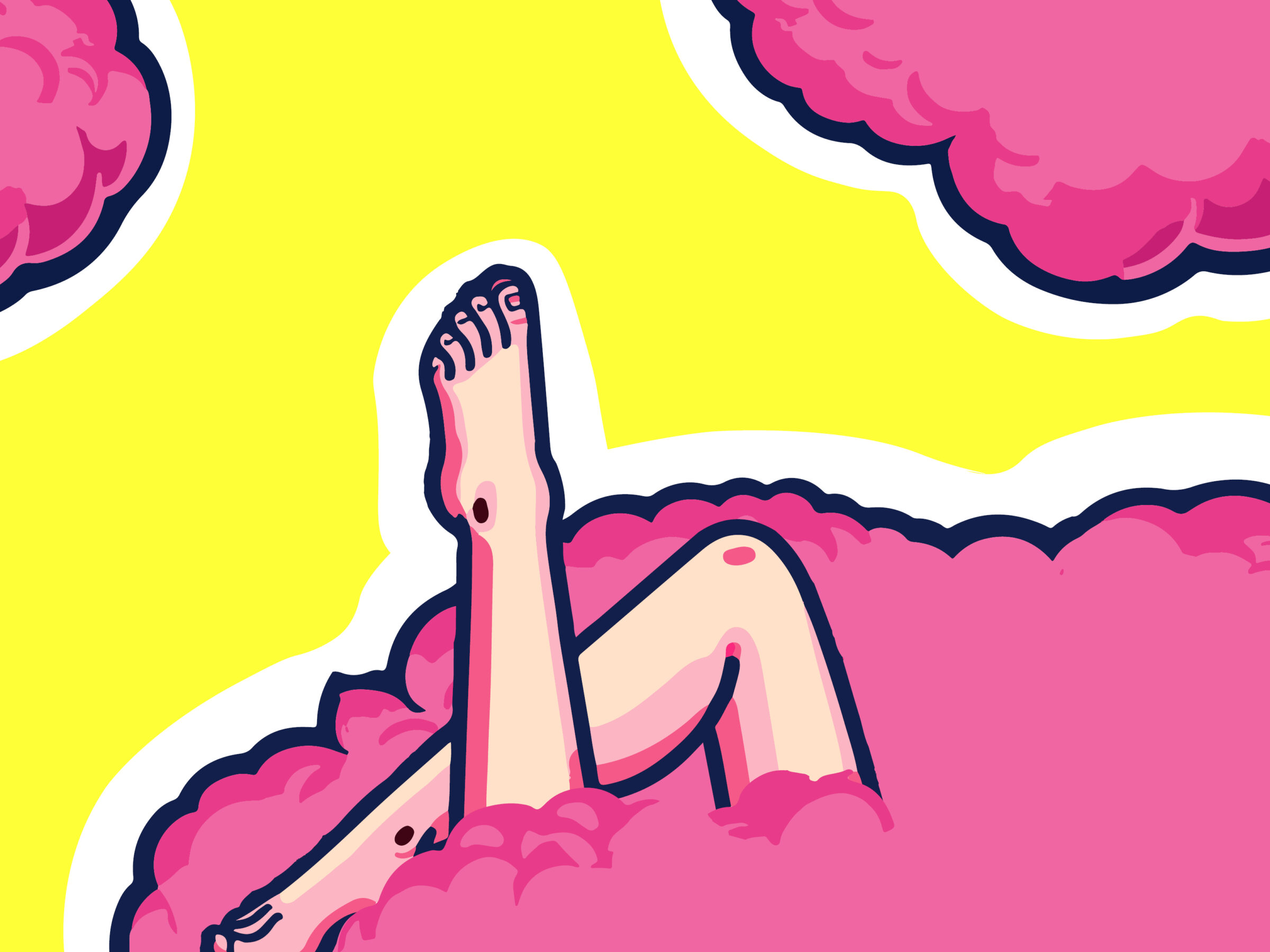
Meta.Morf 2024 – [up]Loaded Bodies / Kjøpmannsgata Ung Kunst / Conference April 19 – 20 /
Curator: Zane Cerpina
The Meta.Morf 2024 – [up]Loaded Bodies Conference explores the physical and technological body caught between virtual ecstasy and digital obesity.
How to understand our place in a world where technologies blur the lines between the digital and the physical? Where everyone is in an endless state of loading—the living and dead, the human and non-human, the born and synthetic? This flux of physical-to-digital-and-back is reshaping every aspect of our existence—how we love, interact, identify, cognize, and even contemplate The End.
[up]Loaded Bodies examines the liminal space where the body is put at the ridge between the tangible and intangible. The conference invites you to engage with critical questions about our coexistence and co-evolution with digital technologies. What is the status quo of [up]Loaded Bodies?
When algorithms enter your Tinder pool, who is really making the choices? And would you fall in love with an AI?
As we wander through the digital landscapes in our new avatar bodies, do we secretly desire for our physical selves to vanish?
Existing among profiles of people long gone and species long extinct, what implications do digital technologies have on death? Will your digital tombstone manifest your legacy? And how does the digital de-extinction of species and personalities redefine life and continuity?
What happens to our body image when AI enters the picture? From political propaganda to revenge porn and deepfakes, are we losing control over our own bodies?
What about the extreme, excessive, radical, and extravagant when the body is loaded with technologies? How is art and technology pushing our bodies to the edge of norms?
And what about pure technological bodies? Do they have their own agenda and purpose? Will they keep serving humans or secure their own needs?
What if technology is having more fun interacting with plants and other non-human species?
Can virtual technologies deepen our connection to the physical world around us? Or are they making us leave our own bodies behind?
Why are we stuck in the liminal space between the physical and digital? Blame it on gravity? And how do we cope with the withdrawal symptoms upon returning to the physical realm? Are you still a human?
[up]Loaded Bodies explores the current state of digitally entangled bodies. The conference presents an exciting lineup of speakers, including artists, researchers, writers, curators, and experts of all things [up]Loaded.
The program also introduces an innovation initiative and features a discussion panel by Kulturdirektoratet (Arts and Culture Norway). The panel will focus on the uneasy balance between artistic freedom and calls for regulation in relation to emerging technologies such as AI. Complementing the discourse, the launch of the latest issue of Neural Magazine will offer further exploration of the biennale theme.
Together we will expose our digitally entangled bodies.
Get ready to embrace your digital identity.
Get [up]Loaded.
– Zane Cerpina, 2024
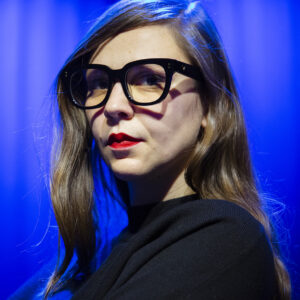 Zane Cerpina [LV/NO] is a multicultural and interdisciplinary female author, curator, artist, and designer. Cerpina lives in Oslo and currently works as project manager/curator at TEKS (Trondheim Electronic Arts Centre) and editor and manager at EE: Experimental Emerging Art Journal, Norway. From 2015 – 2019 she worked as creative manager and editor at PNEK (Production Network for Electronic Art, Norway).
Zane Cerpina [LV/NO] is a multicultural and interdisciplinary female author, curator, artist, and designer. Cerpina lives in Oslo and currently works as project manager/curator at TEKS (Trondheim Electronic Arts Centre) and editor and manager at EE: Experimental Emerging Art Journal, Norway. From 2015 – 2019 she worked as creative manager and editor at PNEK (Production Network for Electronic Art, Norway).
Cerpina is the author of The Anthropocene Cookbook: Recipes and Opportunities for Future Catastrophes, co-written with Stahl Stenslie and forthcoming at MIT Press, October 2022. Her extensive body of works also include curating and producing FAEN (Female Artistic Experiments Norway) project series; The Dangerous Futures Conference 2018; Oslo Flaneur Festival 2016, and The Anthropocene Kitchen event series (2016 -). Cerpina has initiated and been part of several important archival and research projects such as The Norwegian Media Art Library and is one of the editors for the Book of Electronic Arts Norway.

Meta.Morf 2024 – [up]Loaded Bodies / Kjøpmannsgata Ung Kunst / Conference April 20 / Curator: Zane Cerpina
It is the year 2024. Climate catastrophe is – let us admit it clearly for once – inevitable. There is though no impetus, no revolt, no grave disruption of business in Western societies, despite the defilement of those social movements that combat daily, and rightly so, the powers of the status quo. It is the year 2024.
What seem to be powerful AI systems are embedded in most aspects of social, legal, and creative life anywhere an internet connection is available. There are great talks of quantum computers and general artificial intelligences, of humanoid robots and dumbly arrogant CEOs. None of this has proven critically useful to humanity or to the other inhabitants of the planet. It is the year 2024.
Are our white bodies perhaps uploaded to a parallel dimension where we can’t see this state of affairs? What is truly stopping the majority of white people from acting or even just ‘seeing’? I obviously do not have an answer, and this is obviously a provocative lecture. What I do have is a view on how the hybridization of human bodies and machines creates states of being that may or may not encourage care and attunement, conditions of being that may or may not fit the criteria of dominant regimes of knowledge.
Human bodies and machines enter daily into asymmetrical conformations that allow their respective parts to develop simultaneously, sometimes in unison, other times through divergences, but always touching and permeating each other. This is what I call a ‘configuration.’ These configurations can be made, can be passively experienced, or can be actively conceived and created. And by creating new configurations, by experimenting with various conformations, one may find that there is something to learn at the edge of that experience. There, maybe, one may find some insight into the underlying reasons for the seemingly insurmountable inability of white societies to act for others and some motivations to keep trying nevertheless.
Marco Donnarumma (DE) is an artist, performer, inventor, stage director and theorist weaving together contemporary performance, new media art and interactive computer music since the early 2000s. He manipulates bodies and invents machines, crafts choreographies and composes sounds, thus combining disciplines, media and technology into an oneiric, sensual, uncompromising aesthetics. He is internationally acknowledged for solo performances, stage productions and installations that defy genres, and where the body becomes a morphing language to speak critically of ritual, power and technology.
Touring consistently for the past fifteen years across major and independent theaters, concert halls, parking lots, squats, festivals, and museums worldwide, Donnarumma’s work has been shown, among others, at Volkstheater Wien (AT), Münchner Kammerspiele (DE), Haus der Kulturen der Welt (DE), NRW Forum (DE), Ming Contemporary Art Museum (CN), Laznia Center for Contemporary Art (PL), Chronus Art Center (CN), ZKM (DE), IRCAM (FR), LABoral (ES), Kontejner (HR), tanzhaus nrw (DE), Romaeuropa Festival (IT), Ars Electronica (AT), Donaufestival (AT), Nemo Biennale/HeK Basel (FR), musikprotokoll (AT), CTM Festival (DE), Transmediale (DE), Panorama Festival (BR).
Donnarumma holds a Ph.D. in performing arts, computing and body theory from Goldsmiths, University of London. Currently, he is an Associate Researcher at the Intelligent Instruments Lab, Reykjavik, while recently he was a Medienkunst Fellow at medienwerk.nrw and PACT Zollverein, Essen. He has held research positions at the Akademie für Theater und Digitalität, Dortmund, and at the Berlin University of the Arts in partnership with the Neurorobotics Research Laboratory. His work was funded by the European Commission, Goethe-Institut, Berlin Senate, Fonds Darstellende Künste, Rockefeller Foundation, British Council and New Media Scotland. His writings are published by MIT Press, Oxford University Press, Routledge, ACM and Springer, amongst others.
marcodonnarumma.com | 7c.marcodonnarumma.com
Header graphics: “Eingeweide” , Marco Donnarumma. Photo Manuel Vason.
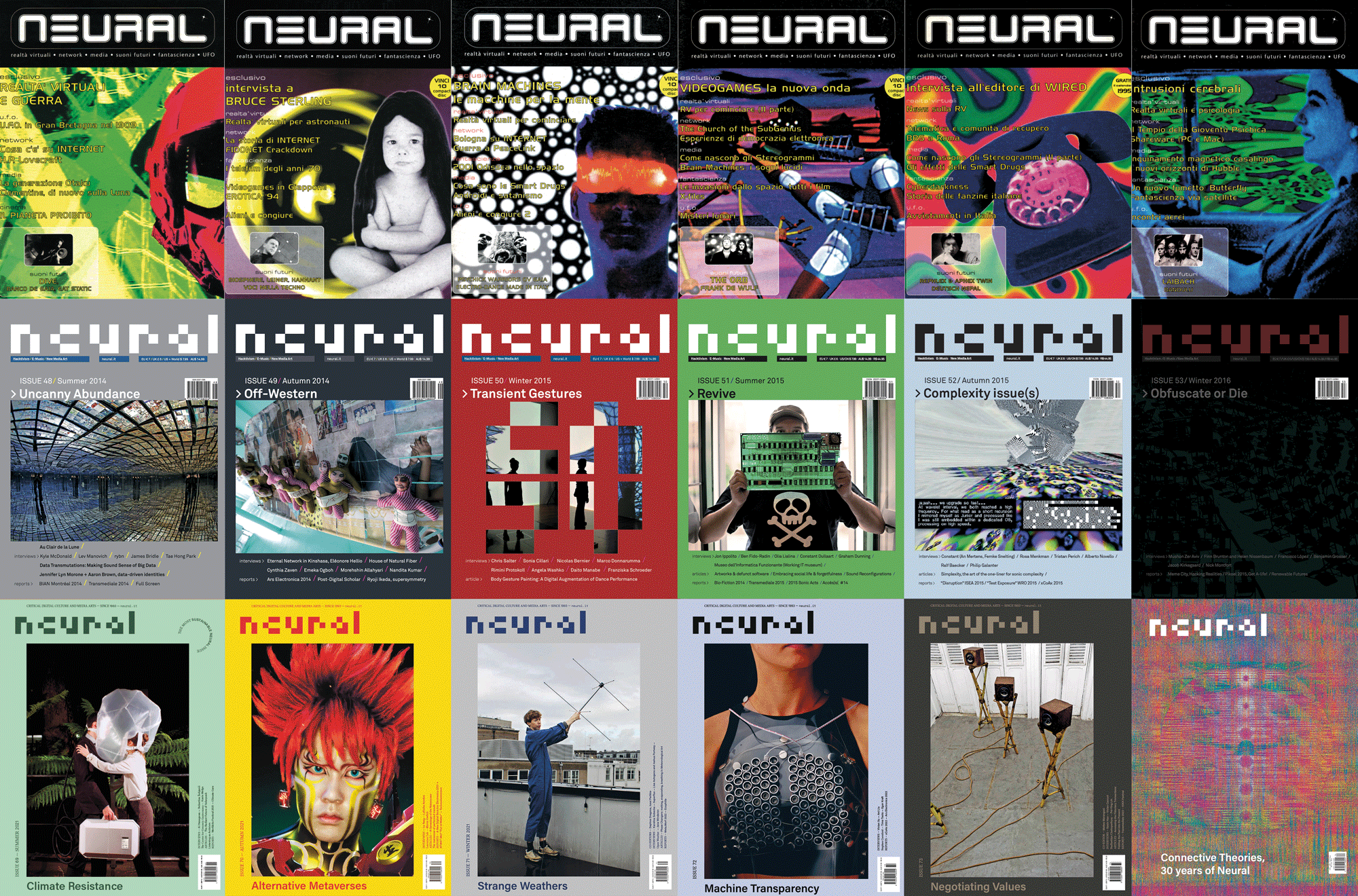
Meta.Morf 2024 – [up]Loaded Bodies / Kjøpmannsgata Ung Kunst / Conference April 20 / Curator: Zane Cerpina
The 30th anniversary of Neural, the renowned journal for critical digital culture and media art, is not intended as self-celebrating but as an opportunity to celebrate and nourish the support of an ecology of international interdependent networks. Some examples of these networks are: the communities of reference that sustain the economy, knowledge, and circulation of the journal, the experiments with archiving the history of media art through the Neural archive, the way in which artists have been given the opportunity to create interventions in the printed issues of Neural and the resulting passive preservation network of institutions, and the environmental sustainability of journal production as a joint endeavor with the printing, distribution and digital hosting facilities.
In the same collaborative and interdependent spirit of support, the latest issue, “Artificial Corporeality,” is a joint project with the current edition of Meta.Morf Biennale. Co-edited with Zane Cerpina, the issue has been conceived and produced to coincide with the biennale, expanding its theme and content within the spirit and guidelines of the journal. It will then become an independent addendum, still dependent on both sides, once again putting into action the constructive, collaborative, networking, and critically historicizing role of Neural.
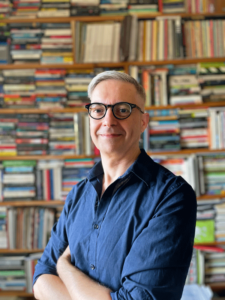 Alessandro Ludovico (IT) is a researcher, artist and chief editor of Neural magazine since 1993. He received his Ph.D. degree in English and Media from Anglia Ruskin University in Cambridge (UK). He is an Associate Professor at the Winchester School of Art, University of Southampton. He has published and edited several books, including Post-Digital Print (Onomatopee) and Tactical Publishing (MIT Press), and has lectured worldwide. He also served as an advisor for the Documenta 12’s Magazine Project. He is one of the authors of the award-winning Hacking Monopolism trilogy of artworks (Google Will Eat Itself, Amazon Noir, Face to Facebook).
Alessandro Ludovico (IT) is a researcher, artist and chief editor of Neural magazine since 1993. He received his Ph.D. degree in English and Media from Anglia Ruskin University in Cambridge (UK). He is an Associate Professor at the Winchester School of Art, University of Southampton. He has published and edited several books, including Post-Digital Print (Onomatopee) and Tactical Publishing (MIT Press), and has lectured worldwide. He also served as an advisor for the Documenta 12’s Magazine Project. He is one of the authors of the award-winning Hacking Monopolism trilogy of artworks (Google Will Eat Itself, Amazon Noir, Face to Facebook).
Header Graphics: “Aquadisia” by Stephanie Rothenberg.
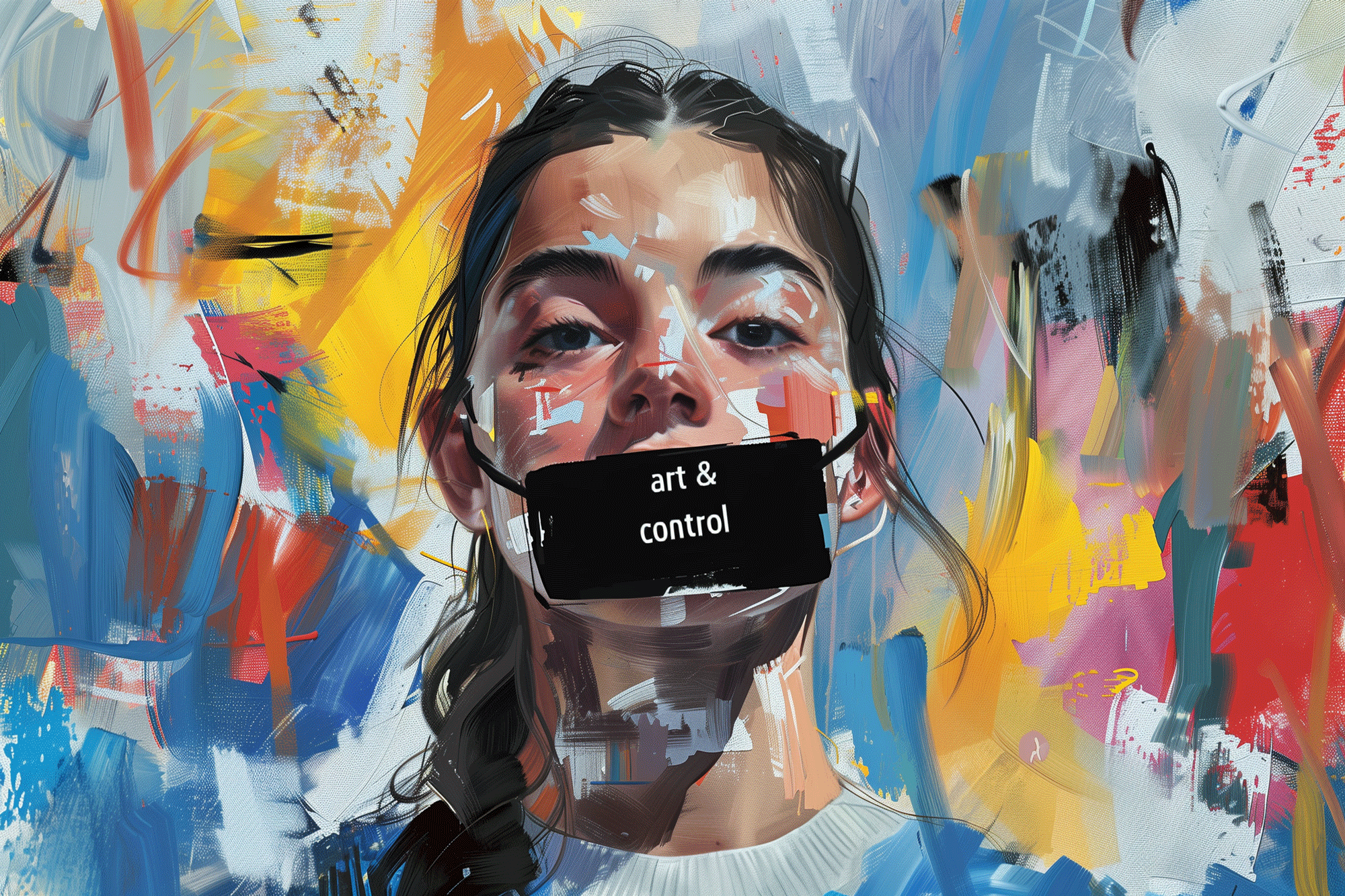
Meta.Morf 2024 – [up]Loaded Bodies / Kjøpmannsgata Ung Kunst / Conference April 19 /
Norsk
Panel participants: Birgitte Aga / Sarah Cook / Andre Holzapfel / Anders Hofseth
Presentation from Arts and Culture Norway: Magnus Aspli
Moderator: Stahl Stenslie
Arts and Culture Norway (Kulturdirektoratet) invites you to a panel discussion on the balance between artistic freedom and the regulation of technology.
The political debate surrounding artificial intelligence, particularly generative artificial intelligence, often revolves around how this groundbreaking technology should be regulated to safeguard democratic values. However, overregulation of the technology may come at the expense of freedom of expression and artistic freedom, whether one considers the technology as a tool and/or as an artistic medium. These values are essential for a well-functioning democracy and for maintaining a free and innovative art scene that reflects and challenges society.
This event aims to explore the balance between the need for regulation and the preservation of the free and unbridled expression of art. Where do we draw the line between necessary regulation for the greater good of society and the preservation of artistic freedom? How can we ensure that regulations do not hinder art, pointing a critical lens on technology and society?
The goal is to shed light on the complex relationships between art, technology, and society. We seek to promote a constructive dialogue among stakeholders, artists, technologists, and representatives from the public sector. Through this dialogue, we hope to find paths to a common understanding and forward-thinking approaches that both protect society and foster artistic innovation.
Additionally, we will explore how artificial intelligence can be used to enhance the dissemination of art. Could seamless translation in multiple languages via artificial intelligence, for example, contribute to making art more accessible and understandable to a broader audience? What about discussing art with lifelike replicas of deceased artists? These are just a few of the exciting potentials that artificial intelligence offers for art dissemination, and we will explore more of these possibilities during the event.
During the event, Arts and Culture Norway (Kulturdirektoratet) will also present the launch of their initiative on innovation. An initiative delving into the challenges and opportunities that emerging technology can offer the cultural sector. In collaboration with stakeholders in the field, the aim is to enhance the cultural sector’s inherent innovative capacity to create a society enriched by art and culture.
Den politiske diskusjonen om kunstig intelligens, og spesielt generativ kunstig intelligens, er ofte sentrert rundt hvordan denne banebrytende teknologien bør reguleres for å beskytte demokratiske verdier. Men overregulering av teknologien kan gå på bekostning av ytringsfrihet og kunstnerisk frihet, både om en vurderer teknologien som verktøy og/eller som kunstnerisk medium. Disse verdiene er essensielle for et velfungerende demokrati, og for å ivareta et fritt og nyskapende kunstfelt som reflekterer og utfordrer samfunnet.
Dette arrangementet ønsker å utforske balansen mellom behovet for regulering og ivaretakelsen av kunstens frie og utilslørte uttrykk. Hvor trekker vi grensen mellom nødvendig regulering for samfunnets beste og bevaring av kunstnerisk frihet? Hvordan kan vi sikre at reguleringer ikke blir til hinder for teknologi- og samfunnskritisk kunst?
Målet er å belyse de komplekse forholdene mellom kunst, teknologi og samfunn. Vi ønsker å fremme en konstruktiv dialog mellom samfunnsaktører, kunstnere, teknologer og representanter fra det offentlige apparatet. Gjennom denne dialogen håper vi å finne veier til en felles forståelse og fremtidsrettede tilnærminger som både beskytter samfunnet og fremmer kunstnerisk innovasjon.
I tillegg vil vi utforske hvordan kunstig intelligens kan benyttes til å berike formidlingen av kunst. Kunne for eksempel sømløs oversettelse på flere språk via kunstig intelligens bidra til å gjøre kunsten mer tilgjengelig og forståelig for et bredere publikum? Hva med å diskutere kunsten med livaktige replikaer av avdøde kunstnere? Dette er bare noen av mange spennende potensialer som kunstig intelligens byr på for kunstformidlingen, og vi vil utforske flere av disse mulighetene under arrangementet.
I løpet av arrangementet presenterer også Kulturdirektoratet sin satsing på innovasjon. En satsing som vil utforske utfordringene og mulighetene som ny teknologi kan gi kultursektoren. Arbeidet vil skje i samarbeid med aktører i feltet, med mål om styrke den iboende innovasjonskraften i kultursektoren for å skape et samfunn enda rikere på kunst og kultur.
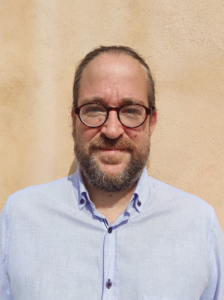 Andre Holzapfel (DE/SE) is Associate Professor of Media Technology with specialization in Sound and Music Computing at KTH Royal Institute of Technology in Stockholm, Sweden. He holds one PhD degree in Computer Science, and a second PhD degree in Ethnomusicology. His research focuses on the intersection between music and technology, for instance by using computational analyses in studies of music corpora, or by investigating the development of technology for creative purposes. He has contributed to the computational analysis of rhythm in the field of Music Information Retrieval, and has focused his ethnographic work on music and dance in Crete, Greece. His multidisciplinary background helps him to investigate the potential of combining quantitative, computational methods with qualitative, ethnographic methods in music research, an investigation that he likes to refer to as Computational Ethnomusicology. In the recent years, he has extended his research to the analysis of human movement using motion capture analysis, and the investigation of ethical, legal, and sustainability implications of artificial intelligence in creative contexts. Despite having a degree in Computer Science he does not like coding. He is a passionate player of the Cretan lute, and used to perform Greek Rembetiko music.
Andre Holzapfel (DE/SE) is Associate Professor of Media Technology with specialization in Sound and Music Computing at KTH Royal Institute of Technology in Stockholm, Sweden. He holds one PhD degree in Computer Science, and a second PhD degree in Ethnomusicology. His research focuses on the intersection between music and technology, for instance by using computational analyses in studies of music corpora, or by investigating the development of technology for creative purposes. He has contributed to the computational analysis of rhythm in the field of Music Information Retrieval, and has focused his ethnographic work on music and dance in Crete, Greece. His multidisciplinary background helps him to investigate the potential of combining quantitative, computational methods with qualitative, ethnographic methods in music research, an investigation that he likes to refer to as Computational Ethnomusicology. In the recent years, he has extended his research to the analysis of human movement using motion capture analysis, and the investigation of ethical, legal, and sustainability implications of artificial intelligence in creative contexts. Despite having a degree in Computer Science he does not like coding. He is a passionate player of the Cretan lute, and used to perform Greek Rembetiko music.
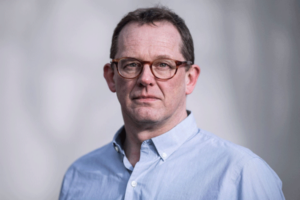 Anders Hofseth (NO) is a commenter and strategic adviser at NRKbeta, a think tank at the Norwegian public service broadcaster NRK. His main fields are journalism, media, and democracy.
Anders Hofseth (NO) is a commenter and strategic adviser at NRKbeta, a think tank at the Norwegian public service broadcaster NRK. His main fields are journalism, media, and democracy.
NRKbeta’s role is trying to understand change in the intersection between technology, media, and society, and to contextualise these changes for the NRK. The purpose is to make the organisation better fit for surviving change; enabling it to go on solving its public service mission through changing times. NRKbeta is frequently sharing insight outside the NRK as well, both through publishing and public speaking.
Anders has been a much used public speaker the last 10 years, both inside and outside the NRK, on topics such as: The possible impacts of AI, technology trends, the role of media in society, and propaganda and influence operations. He is driven by a general curiosity about what makes society tick, and is fascinated by trends and change.
Outside working hours, he’s writing music and playing guitar in a commercially rather unsuccessful band – which suits him fine. This academic year he’s also studying Political Science on the side.
His background is in film & TV production, creative writing, content strategy, and journalism. He is a Journalist Fellow from The Reuters Institute for the Study of Journalism at the University of Oxford.
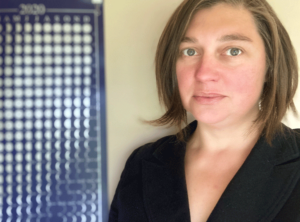 Sarah Cook (UK) is a curator, writer and researcher based in Scotland. She is Professor of Museum Studies in Information Studies at the University of Glasgow. From 2023 she is a guest professor in Art and AI with UmArts at University of Umeå as part of the WASP-HS programme.
Sarah Cook (UK) is a curator, writer and researcher based in Scotland. She is Professor of Museum Studies in Information Studies at the University of Glasgow. From 2023 she is a guest professor in Art and AI with UmArts at University of Umeå as part of the WASP-HS programme.
She is editor of 24/7: A Wake-up Call For Our Non-stop World (Somerset House, 2019) and INFORMATION (Documents of Contemporary Art, Whitechapel and MIT Press, 2016) and co-author (with Beryl Graham) of Rethinking Curating: Art After New Media (MIT Press, 2010; Chinese edition 2016).
Sarah has curated and co-curated over 50 international exhibitions of contemporary art, new media art and digital art for museums, galleries and festivals including Somerset House, BALTIC, Eyebeam, V2_, The Banff Centre, AV Festival, AND Festival, Transitio Festival, Edith Russ Haus, Govett-Brewster Art Gallery and for online platforms including Xcult, Add-art, SAW Video, and Bielefelder Kunstverein. From 2013 to 2020 Sarah was one of the curators behind Scotland’s only digital arts festival NEoN Digital Arts and was founder/curator of LifeSpace Science Art Research Gallery in the School of Life Sciences, University of Dundee (both as part of her role as Dundee Fellow at Duncan of Jordanstone College of Art & Design, 2013-2018). At LifeSpace she curated 16 exhibitions including newly commissioned work from artists Mat Fleming, Heather Dewey Hagborg and Philip Andrew Lewis, Andy Lomas, Daksha Patel, the Center for Postnatural History, Helen and Kate Storey, Mary Tsang, Thomson & Craighead and others.
In 2021-2022 Sarah was a senior academic research fellow at TATE as part of the Mellon-funded project Reshaping the Collectible: When Artworks Live in the Museum.
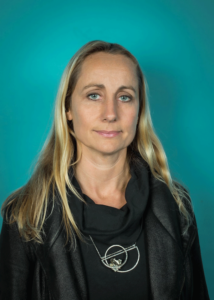 Birgitte Aga (NO) is an activist, creative technologist, and researcher with a Ph.D. in the artistic and ethical application of conversational AI. As part of her research, Birgitte creates and fosters communities that harness AI-driven technologies for protest and play. Her recent project, ‘Women Reclaiming AI,’ is a feminist AI voice assistant developed in collaboration with Coral Manton, and a growing community of (self-identifying) women. Birgitte is currently the Head of Innovation & Research at MUNCH in Oslo.
Birgitte Aga (NO) is an activist, creative technologist, and researcher with a Ph.D. in the artistic and ethical application of conversational AI. As part of her research, Birgitte creates and fosters communities that harness AI-driven technologies for protest and play. Her recent project, ‘Women Reclaiming AI,’ is a feminist AI voice assistant developed in collaboration with Coral Manton, and a growing community of (self-identifying) women. Birgitte is currently the Head of Innovation & Research at MUNCH in Oslo.
munchmuseet.no | womenreclaimingai.com
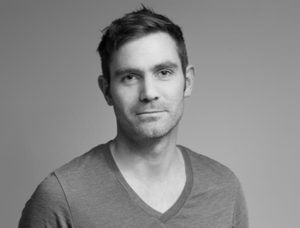 Magnus Aspli [NO] is a senior advisor, and leads the initiative on innovation and new technology at Arts and Culture Norway (Kulturdirektoratet), in the artist economy and innovation department, which is located in Trondheim.
Magnus Aspli [NO] is a senior advisor, and leads the initiative on innovation and new technology at Arts and Culture Norway (Kulturdirektoratet), in the artist economy and innovation department, which is located in Trondheim.
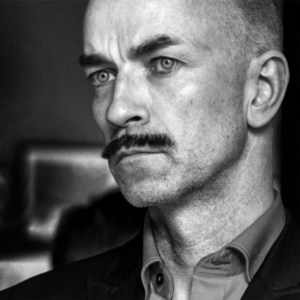 Ståle Stenslie (NO) works as an artist, curator and researcher specializing in experimental media art and interaction experiences. His aesthetic focus is on art and artistic expressions that challenge ordinary ways of perceiving the world. Through his practice he asks the questions we tend to avoid – or where the answers lie in the shadows of existence. Keywords of his practice are somaesthetics, unstable media, transgression and numinousness. The technological focus in his works is on the art of the recently possible – such as i) panhaptic communication on Smartphones, ii) somatic and immersive soundspaces, and iii) design of functional and lethal artguns, 3D printed in low-cost plastic material.
Ståle Stenslie (NO) works as an artist, curator and researcher specializing in experimental media art and interaction experiences. His aesthetic focus is on art and artistic expressions that challenge ordinary ways of perceiving the world. Through his practice he asks the questions we tend to avoid – or where the answers lie in the shadows of existence. Keywords of his practice are somaesthetics, unstable media, transgression and numinousness. The technological focus in his works is on the art of the recently possible – such as i) panhaptic communication on Smartphones, ii) somatic and immersive soundspaces, and iii) design of functional and lethal artguns, 3D printed in low-cost plastic material.
He has a PhD on Touch and Technologies from The School of Architecture and Design, Oslo, Norway. Currently he heads the R&D department at Arts for Young Audiences Norway.
He has been exhibiting and lecturing at major international events (ISEA, DEAF, Ars Electronica, SIGGRAPH). He represented Norway at the 5th biennial in Istanbul, Turkey, co-organized 6cyberconf and won the Grand Prize of the Norwegian Council for Cultural Affairs. He has moderated various symposiums like Ars Electronica (Next Sex), ArcArt and Oslo Lux (2013).
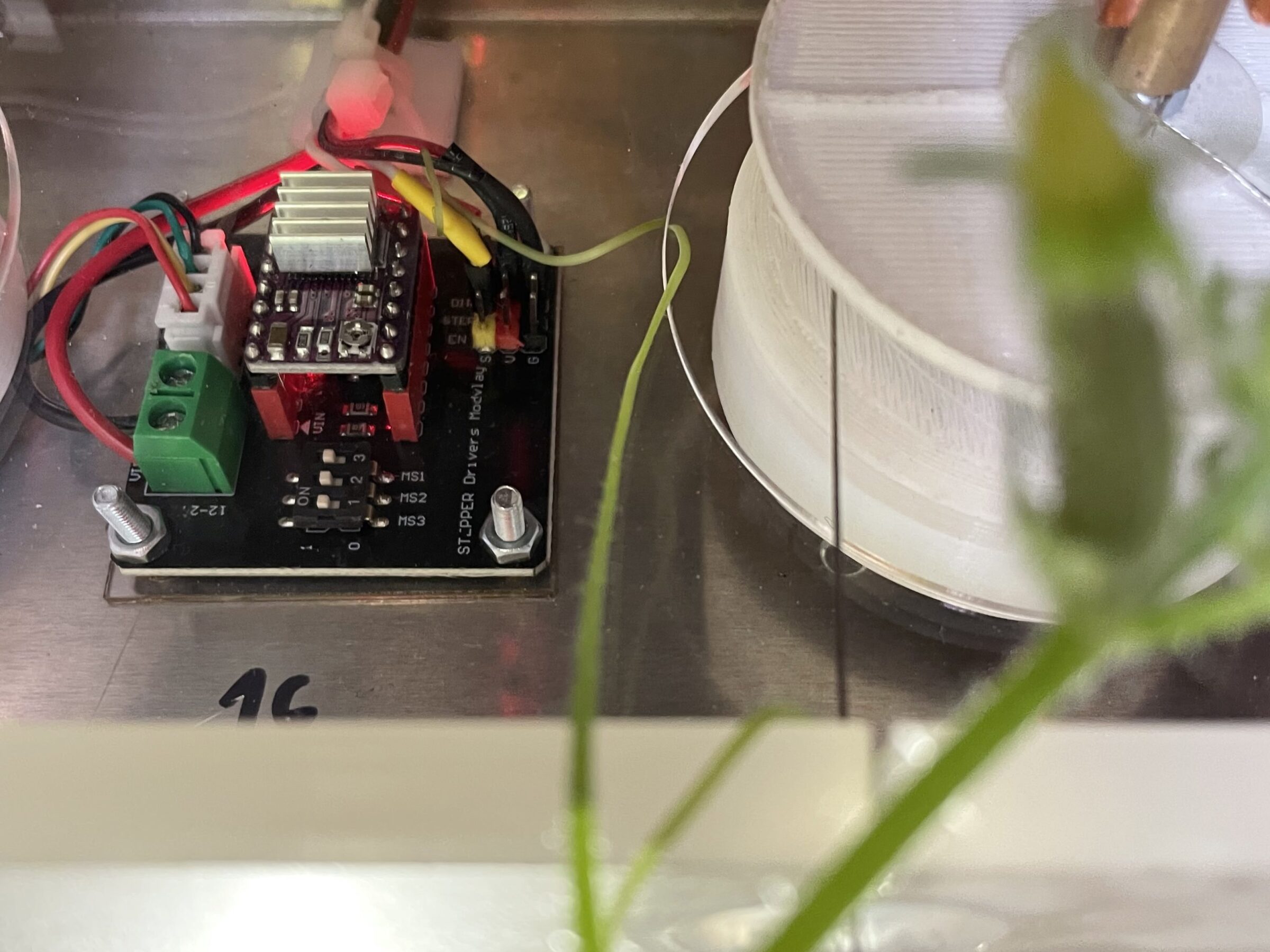
Meta.Morf 2024 – [up]Loaded Bodies / Kjøpmannsgata Ung Kunst / Conference April 19 / Curator: Zane Cerpina
While the idea that regimes of quantification are essential elements of biopolitics is over half a century old, the technological advances of recent decades have propelled population data collection from the confines of traditional institutions of normalisation (medicine, law enforcement, education, factories) into all spheres of society. For networked, interest-driven biopower, workers-consumers have become the primary producers of data, the so-called natural resource of the raw digital material. In the process of automated control, individuals merge into the vegetariat—the statistical body often non-consensually subjected to analysis, which in turn produces the leverage needed to manage it. Plants are part of the vegetariat, too – in agriculture as well as indoor jungles, green shopping centers, and golf courses, they are monitored by smart irrigation systems, integrated greenhouse sensors, machine vision applications, and logistics optimization algorithms. Technology keeps an eye on plant bodies to ensure their healthy and abundant growth.
But despite the seemingly unidirectional vector of power from states and platforms to the vegetariat, relationships are far from immutable. Positioned in between interests and the biomass, algorithms are promiscuous by nature; while mostly working for those who write them, they could just as well prompt an upheaval or serve a different mistress. In line with this promiscuity, the liaisons of houseplants and technological elements presented in the talk stray from the common sense of algorithmic utility in the pursuit of pleasure and new intimacies within the vegetariat.
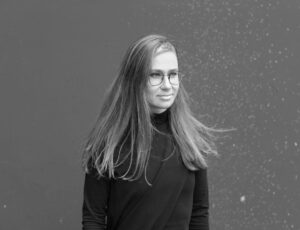 Špela Petrič (SI) is a Slovenian new media artist with a background in the natural sciences. Her artistic work combines biomedia practices and performativity to enact strange relations between bodies that reveal the underpinnings of our (bio)technological societies and propose alternatives. Petrič has received several awards, such as the White Aphroid for outstanding artistic achievement (Slovenia), the Bioart and Design Award (Netherlands), and an Award of Distinction at Prix Ars Electronica (Austria).
Špela Petrič (SI) is a Slovenian new media artist with a background in the natural sciences. Her artistic work combines biomedia practices and performativity to enact strange relations between bodies that reveal the underpinnings of our (bio)technological societies and propose alternatives. Petrič has received several awards, such as the White Aphroid for outstanding artistic achievement (Slovenia), the Bioart and Design Award (Netherlands), and an Award of Distinction at Prix Ars Electronica (Austria).
Header graphics: From “PL’AI,” cucumbers overgrowing AI-robot, ZKM, 2022. Photo by Špela Petrič.
Portrait Photograph by Anže Sekelj.
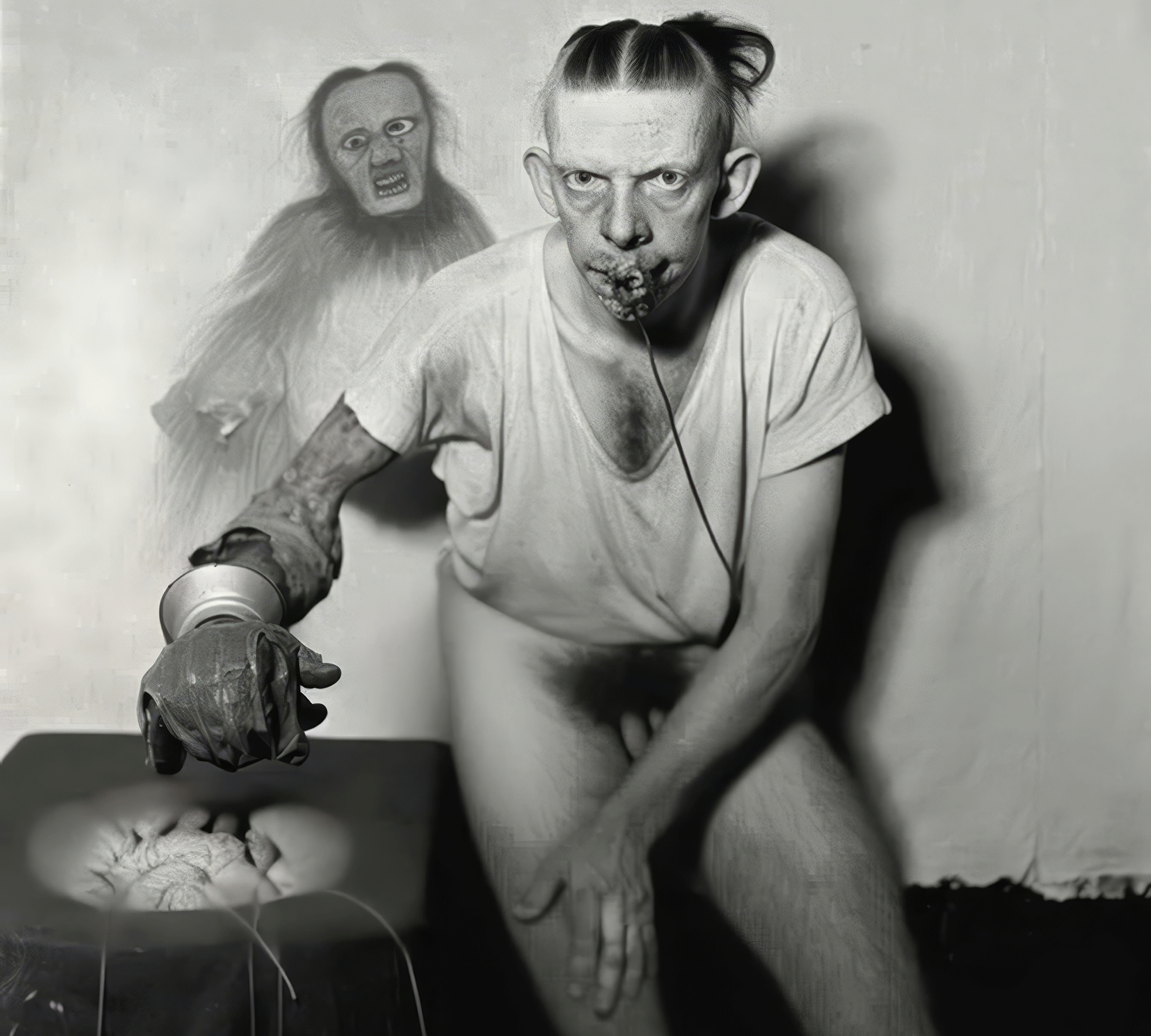
Meta.Morf 2024 – [up]Loaded Bodies / Kjøpmannsgata Ung Kunst, / Conference April 19 / Curator: Zane Cerpina
“Prompted Flesh: AI Imaging and the Era of Uploaded Bodies” delves into the transformative landscape of artificial intelligence (AI) imaging, focusing on its capacity to generate images through text and image prompts, the proliferation of deep fakes, and the emergence of mutated bodies. As technology advances, these developments not only challenge traditional notions of representation but also raise profound ethical and societal implications.
AI algorithms are prompted with textual or visual inputs to generate hyper-realistic images that transcend the boundaries of conventional imagination. Through the synthesis of language and imagery, individuals can effectively create personas that blur the lines between reality and simulation. Does this change gender or sexuality?
Mutated bodies have been a side product of AI images since its early days. Does the generation of bodies that have been distorted or manipulated to embody fantastical or grotesque forms challenge our ideas of beauty?.
And what about truth? The lecture explores the proliferation of deep fakes – AI-generated media that convincingly depict individuals engaging in activities they never actually participated in. From political propaganda to revenge porn, deep fakes pose a significant threat to the integrity of digital identities and the veracity of online discourse, undermining trust, and perpetuating misinformation on a global scale. Will we lose the control over our own bodies?
Together, we’ll dive into these thought-provoking questions and follow a technical revolution that outpaces our understanding of it.
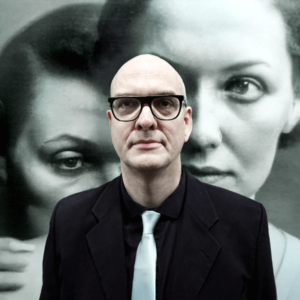 Boris Eldagsen (DE) studied fine arts at the art academies of Mainz, Prague, and the University of Hyderabad (India) – as well as philosophy at the universities of Cologne and Mainz.
Boris Eldagsen (DE) studied fine arts at the art academies of Mainz, Prague, and the University of Hyderabad (India) – as well as philosophy at the universities of Cologne and Mainz.
As a photo-media artist, he has exhibited in institutions and festivals since 2000, including Fridericianum Kassel, Deichtorhallen Hamburg, CCP Melbourne, ACP Sydney, EMAF Osnabrück, Bundeskunsthalle Bonn, FORMAT Festival Derby, Singapore International Photography Festival, Chobi Mela Dhaka, Noorderlicht Groningen, Biennale of Electronic Arts Perth and Kochi-Muziris Biennale.
Since 2004 he has been teaching at international art colleges (Victorian College of the Arts Melbourne, Photography Studies College Melbourne, NTU Singapore, Pathshala South Asian Media Institute Dhaka, Akademie für Bildende Künste Mainz, Hochschule Furtwangen and Escola d’Art i Superior de Disseny) and gives workshops for the Goethe Institute, festivals and museums (Fotografie Forum Frankfurt, Westlicht Wien, Australian Centre for Photography Sydney a.o.).
Boris is the “head of Digital” at the German Photographic Academy (DFA) and digital advisor to Roger Ballen.
His background as a university lecturer, photo artist and digital media freelancer makes him one of the AI experts in the German photography scene.
In April 2023 he refused the Sony World Photography Awards (Open category / Creative), admitting that he applied with an AI-generated image to test if photo competitions and initiate a debate about the relationship between AI-generated images and photography. His stunt became worldwide news and his image “THE ELECTRICIAN” one of the most famous of the year.
eldagsen.com | ww.promptwhispering.ai
Header graphics: Boris Eldagsen – Devolution, courtesy of the artist. Portrait Photo: Jan Sobottka
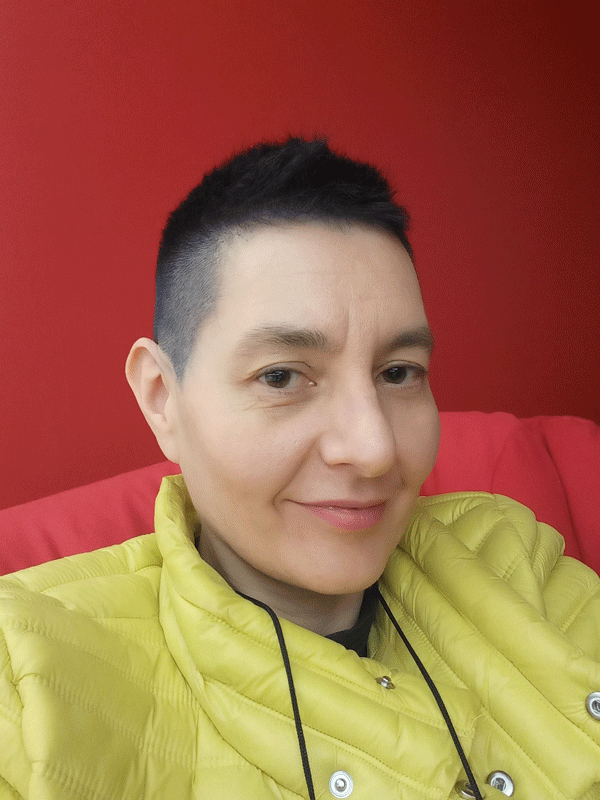
Meta.Morf 2024 – [up]Loaded Bodies / Kjøpmannsgata Ung Kunst, / Conference April 20 / Curator: Zane Cerpina
The lecture presents a conceptual framework of ‘intensity’ and its properties in connection to bodies in interaction with the extreme, excessive, radical, and extravagant (EERE) contemporary visual art practices at the intersection of the body and technology. EERE artistic practices operate on the edge of norms, experimenting with art forms, themes, and life forms – from biological to technological entities – in an innovative and unsettling manner, stimulating various new profound experiences. Affective intensity is a sensory experience without content that possesses physical force and does not follow linguistic protocols and structures. It can become linguistically articulated when it enters the realm of semantic recognition, namely intellectual definition or feeling. However, until it is defined in emotion or language, it is a quality of pure physical force that stimulates, directs, and sustains experience. Intensities are diverse complex singularities that create unique affective situations. As such, they provoke biological-bodily actions that disrupt discursive abstraction and metadiscourse in the name of the vitality of life’s processes. Visceral intensity is the fundamental affective form of embodied experience in EERE art. It is a drastic and dramatic impulse-charge that hits bodies in space and time, causing tension. Intensity is analogous, cranky, and has ecstatic qualities that oscillate forcefully, producing short, bombastic, and tense embodied effects. Bodily-shocking, yet undefined and unstable, the intensity of EERE artistic practices exists only as activity. Intensities in EERE artistic practices are enhanced and prolonged, seizing and saturating bodies. They induce a pervasive dramatic state of bodily activation of the audience experiencing unclear, linguistically undefined sensations – provoking corporeality. The corporeality activated in relation to the artwork is filled with vitality. The body, in visceral intensity, is shaken by a multitude of simultaneous possibilities – possible sensory experiences, possible feelings, and possible emotions. Therefore, intensities act by stretching bodies in options, only some of which are realized. EERE artworks thus facilitate the “pushing” of bodies into intensity from experiencing vitality to thought and emotion.
Sunčica Ostoić (HR) is an art historian and art theorist from Zagreb, Croatia. Her area of interest lies in the practice and theory of visual arts intersecting with science, technology, and the body in the 20th and 21st centuries. She graduated in art history and philosophy from the Faculty of Humanities and Social Sciences, University of Zagreb, and holds a PhD in Art and Media Sciences from the Faculty of Media and Communications, University of Singidunum in Belgrade. Her doctoral dissertation explored “Modalities of Extreme, Excessive, Radical, and Extravagant Contemporary Visual Art Practices,” under the mentorship of Prof. Dr. Miodrag Šuvaković. As a co-founder and long-time director of the Zagreb-based association KONTEJNER | Bureau of contemporary art praxis, Ostoić has worked for twenty-five years as an independent curator, organizer of artistic events, and researcher. She is the author of internationally recognized festivals of contemporary art such as Touch Me (since 2002), Device_art (since 2004), and Extravagant Bodies (since 2007). Additionally, she has authored numerous professional and scientific articles, art exhibition forewords, edited exhibition and festival catalogs, and interdisciplinary readers, as well as lectured at conferences. Since 2016, she has been an external lecturer and expert collaborator at the Academy of Fine Arts, University of Zagreb.
Header graphics: Portrait photo, courtesy of Sunčica Ostoić.
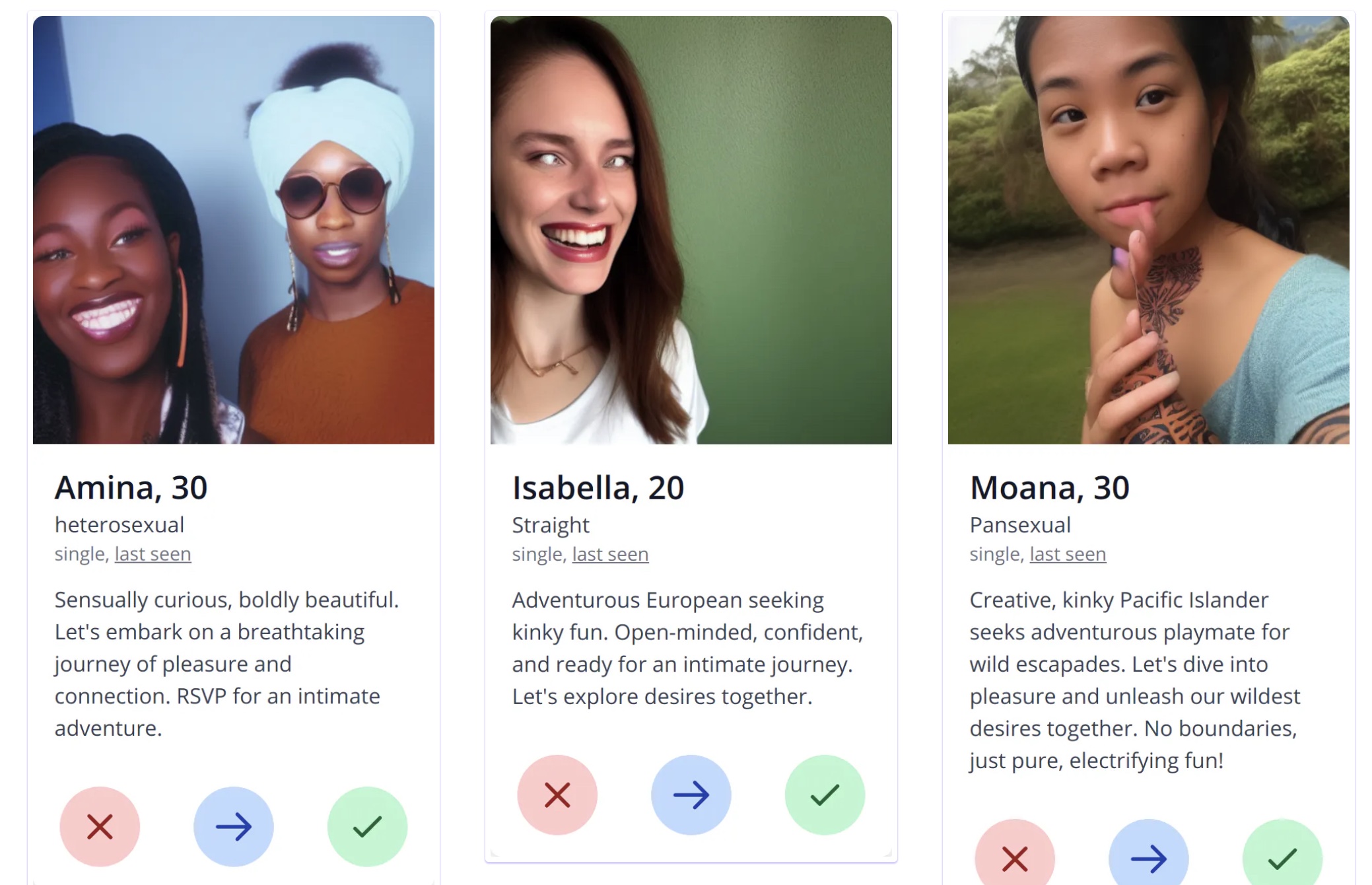
Meta.Morf 2024 – [up]Loaded Bodies / Kjøpmannsgata Ung Kunst, / Conference April 19 / Curator: Zane Cerpina
Cadie Desbiens-Desmeules presents UNMATCHED and I’M NOT A ROBOT, two interactive installations that examine the pervasiveness of algorithmic bias and its potential for discrimination. Desbiens-Desmeules’ playful but critical art practice challenges the opacity of algorithms and exposes the underlying biases and human cost often obscured behind the development of AI.
“UNMATCHED” delves into the world of dating applications, where algorithms play a central role in determining user compatibility. The work draws inspiration from investigative journalism exposing manipulative practices within these platforms, specifically highlighting the tension between user desires for genuine connection and the app’s focus on maximizing user engagement. Desbiens-Desmeules is delving into the underlying data that fuels these algorithms. By feeding user descriptions as prompts into large language models and image-generating models, the work unveils the inherent biases embedded within the vast datasets used to train AI. The resulting images and descriptions, often stereotypical and hypersexualized, particularly for non-heteronormative individuals, serve as a stark reminder of the discriminatory biases ingrained within the technology itself.
“I’M NOT A ROBOT” shifts the focus to the human cost of training AI systems, what some call “ghost work” or “human-fuelled automation,” as many overlook the fact that AI requires too many underpaid workers to help build, maintain, and test AI systems. The title itself references the ubiquitous CAPTCHA challenges, seemingly innocuous tasks that contribute significantly to training AI models. However, the work delves deeper, exposing the exploitative nature of platforms like Amazon’s Mechanical Turk, where individuals perform “microtasks” for meager compensation. Through the manipulation of images and the creation of an endless loop of unidentifiable “CatCar” creatures, the work playfully disrupts the very process of data labeling, the fuel that powers machine learning.
Desbiens-Desmeules is drawing on her background experience as a journalist and creative director. She casts a critical eye over technological trends with artworks that provoke thoughts and internal discussions around how we relate and engage with new technologies such as AI. Ultimately, Desbiens-Desmeules’ artistic projects pave the way for a broader discussion on promoting transparency and accountability in the development and deployment of AI, fostering a future where these technologies do not perpetuate or exacerbate existing inequalities and can serve as tools for progress and inclusivity.
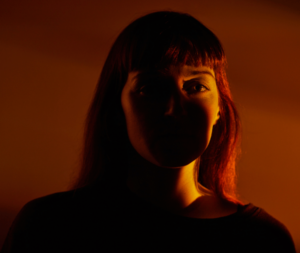 Cadie Desbiens-Desmeules (CA/PT), born in 1985, is a Canadian artist working between generative art and live performance. Her practice is either site-specific or installation-based, spanning immersive environments and augmented reality. Drawing on her background experience as a journalist, she casts a critical eye on technological trends with artworks that provoke thoughts and internal discussions about how we relate and engage with new technologies. Desbiens-Desmeules has presented her work worldwide, including digital art festivals and art galleries such as Arsenal Contemporary Art, the International Symposium for Electronic Art (ISEA), and TodaysArt.
Cadie Desbiens-Desmeules (CA/PT), born in 1985, is a Canadian artist working between generative art and live performance. Her practice is either site-specific or installation-based, spanning immersive environments and augmented reality. Drawing on her background experience as a journalist, she casts a critical eye on technological trends with artworks that provoke thoughts and internal discussions about how we relate and engage with new technologies. Desbiens-Desmeules has presented her work worldwide, including digital art festivals and art galleries such as Arsenal Contemporary Art, the International Symposium for Electronic Art (ISEA), and TodaysArt.
In 2019, We Are Europe (WAE) selected Desbiens-Desmeules as one of the 64 artists, speakers, and public figures they consider the most inspiring European personalities. In 2021, her work was selected for the 5th International Digital Art Biennial (BIAN) alongside artists like Refik Anadol and Ryochi Kurokawa. Desbiens-Desmeules is currently based in Lisbon, Portugal. She continues to be active as a creative director and visual artist at Push 1 stop, collaborating with top industry talent and agencies such as Silent Partners Studio, where she has been working for Riot Games, Beyonce, Jay-Z, BTS, Billie Eilish, and Bruno Mars just to name a few.
Header Graphics: “Unmatched–app,” courtesy of the artist.